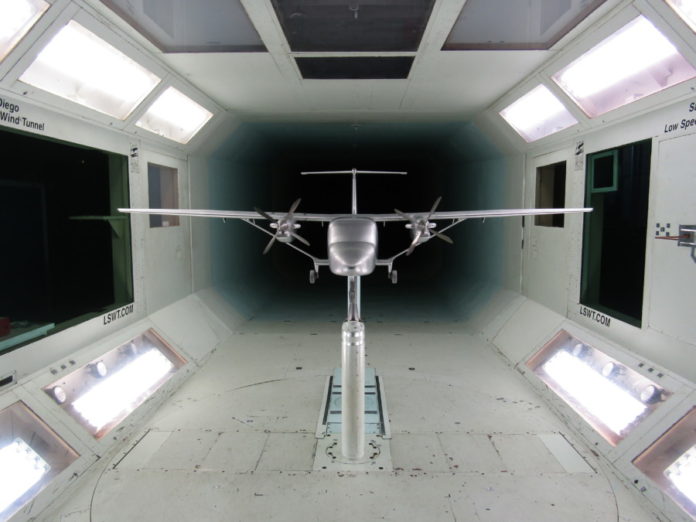

Wictita, Kansas-based Textron Aviation has completed initial wind tunnel testing of its new twin-engine Cessna SkyCourier turboprop. Results from comprehensive wind tunnel tests will provide performance and aerodynamic characteristics and structural load data, further finessing the aircraft’s design.
“For the initial wind tunnel testing, we use a custom, precision model with electric motors and scaled propellers calibrated to represent the thrust produced by the real aircraft,” said Textron Aviation senior vice president, engineering, Brad Thress. “We’re making outstanding progress in the development of this clean-sheet aircraft and are eager to continue defining the details that will allow us to start creating tools and parts.”
Since Textron announced the Cessna SkyCourier in November 2017, the company has seen tremendous interest from operators looking for a modern solution in the large twin-utility space. As part of the aircraft’s design development, the company is garnering feedback from its Customer Advisory Board.
“The flexibility and mission potential for the Cessna SkyCourier is attractive to a wide variety of operators,” said Thress. “The feedback we’re gathering from the CAB is extremely important as we develop an aircraft that is reliable, efficient and meets the diverse requirements of an array of mission profiles.” The company is anticipating first flight of the Cessna SkyCourier in 2019 with entry into service in 2020.
The Cessna SkyCourier is a twin-engine, high-wing, large utility turboprop that will offer a combination of high performance and low operating costs for air freight and special missin operators. The freighter variant will feature a large cargo door and a flat floor cabin that is sized to handle up to three LD3 shipping containers with 6,000 pounds of maximum payload capability.
The aircraft will also afford a maximum cruise speed of up to 200 ktas and a 900 nautical-mile maximum range. The aircraft will be powered by two wing-mounted Pratt & Whitney PT6A-65SC turboprop engines, and operated with Garmin G1000 NXi avionics.











